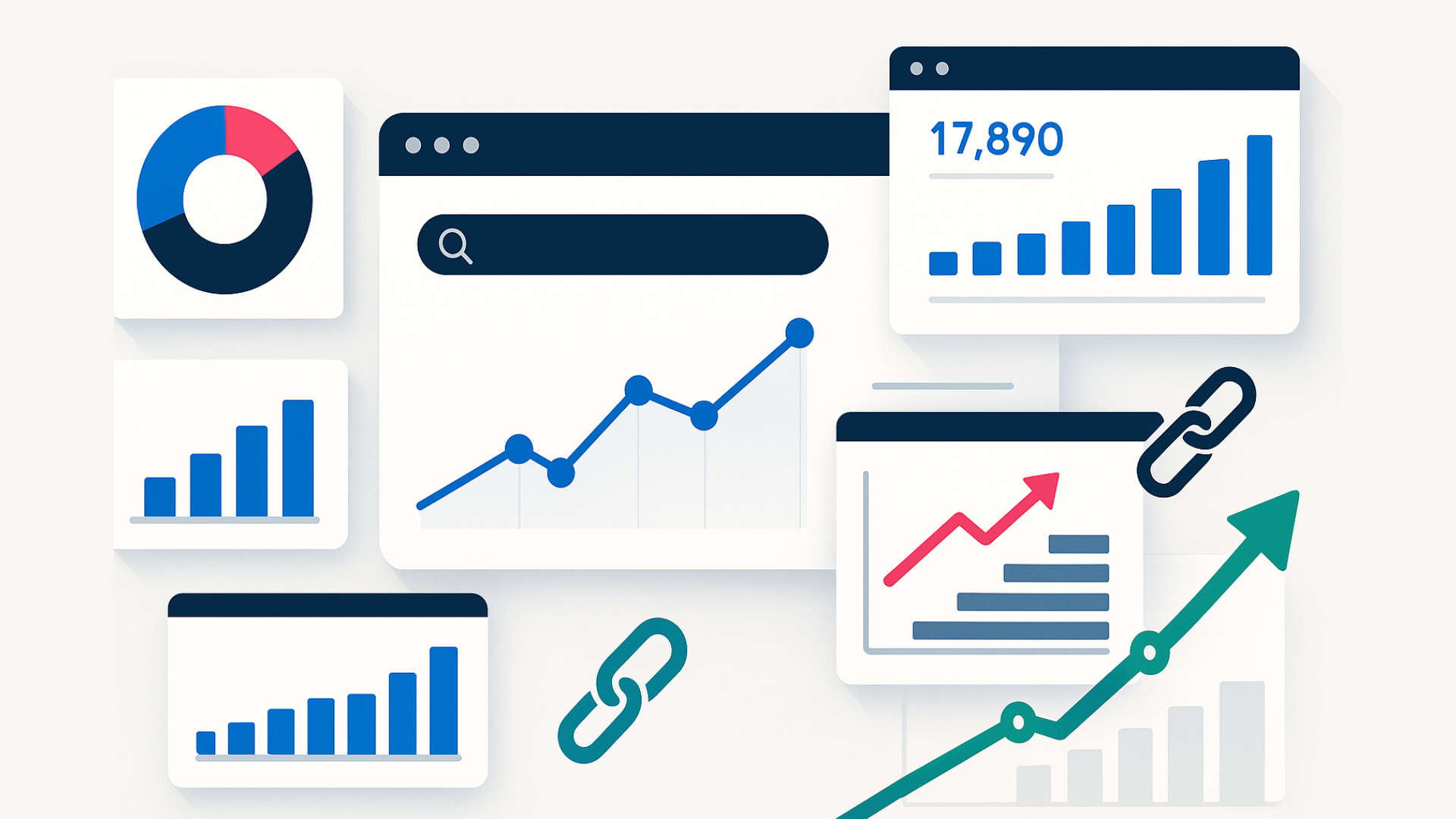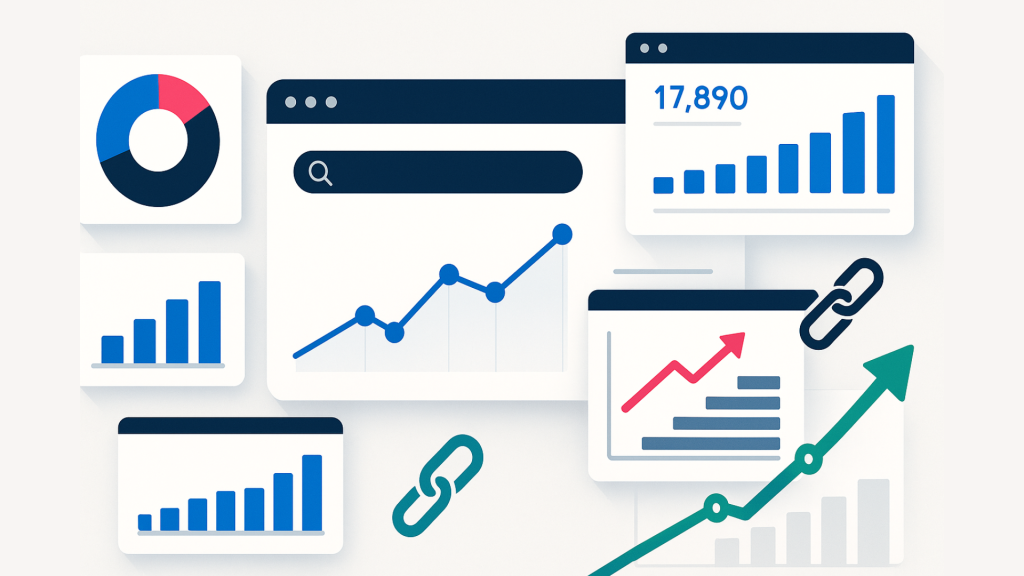How to monitor your website’s performance and SEO metrics

Your website is live – now it’s time to measure what matters.
To sustain traffic growth, you need to track performance, collect meaningful data, and make informed, data-driven decisions that shape your site’s success.
Here are the key areas to monitor and the tools that can automate much of the work.
How to monitor your website for SEO performance
Website performance and uptime alerts
When a page loads slowly, conversions drop, engagement falls, and the user experience suffers.
Visitors expect pages to respond instantly, whether they’re comparing products or just beginning their research journey on your blog.
Monitor site speed with PageSpeed Insights, but that only scratches the surface of what you should be tracking.
To keep your site running smoothly, focus on a few other key areas:
- Uptime: Sites that go offline lose money, and downtime impacts crawl and index rates. Rankings can also drop temporarily.
- Errors: Server or client errors, such as 5xx or 4xx errors, must be monitored and rectified.
- Redirects: Broken links and redirects.
- Internal links: Monitor existing and broken links.
Website performance covers a wide range of technical SEO best practices, and manual checks rarely make the best use of your time.
Automate site audits and set up alerts to catch issues, such as server errors or extended downtime, before they affect users or rankings.
Tools that make life easier:
- UpTime Robot.
- Pingdom.
- Semrush site audit.
Dig deeper: Core Web Vitals: How to measure and improve your site’s UX
Keyword rankings
A key goal of SEO is to enhance visibility through improved keyword rankings.
If your site – or a client’s – isn’t appearing on Google, Bing, ChatGPT, or other platforms, you’re missing out on valuable traffic and potential revenue.
Manual tracking isn’t realistic, so rely on industry tools to monitor:
- Current keyword positions.
- Ranking changes.
- Location.
- Traffic potential.
To understand whether your efforts are helping or hurting, go beyond surface-level rankings and dig into deeper insights, such as:
- Average positions.
- Ranking distributions.
- Volatility.
- Trends over time.
- Keyword difficulty.
- Search intent type.
- Click-through rate.
Keyword data helps you maintain focus on optimization efforts that have a return on investment. To monitor this data, use tools to search for the keywords that you’re trying to optimize for.
Tools that make life easier:
- Google Search Console.
- Semrush.
- SE Ranking.
Dig deeper: Keyword research for SEO: The ultimate guide
Get the newsletter search marketers rely on.
See terms.
Website changes
Websites evolve constantly – content updates, design tweaks, and technical fixes occur daily.
On enterprise sites or those managed by multiple teams, this creates plenty of room for error.
While many of these changes overlap with performance monitoring, it’s better to track more than risk missing something important.
Use monitoring tools to track:
- Web accessibility compliance.
- Site speed.
- Content changes.
- Before and after comparisons.
- On-page content changes to content, headings, meta tags, etc.
- URL changes and redirects.
Proactive monitoring makes it easier to connect cause and effect. When rankings shift, you’ll have data showing what changed and when. For example, a content refresh on a service page might coincide with a keyword’s jump from position 23 to 1 – a clear signal of what worked.
As a site scales and more stakeholders contribute, automation becomes essential. Smaller teams may still manage manual tracking, but for most, monitoring tools are indispensable.
Tools that make life easier:
- Semrush.
- Screaming Frog.
- VisualPing.
- Botify.
- Lumar.
Lead monitoring
Website, blog, and SEO channels now deliver the strongest ROI for B2B brands, according to HubSpot’s State of Marketing Report.
Clients want to justify their marketing budgets and see that SEO efforts are producing a return on investment.
Use lead tracking tools to identify B2B website visitors and pinpoint:
- Opportunities in the pipeline.
- Lead sources.
- Conversion potential.
Lead tracking shouldn’t stop when visitors arrive. Monitoring behavior shows which pages they visit, where they exit, and what happens during form submissions.
For example, analyzing form data can uncover broken fields or incomplete submissions that cost potential leads.
Knowing where prospects come from, how they convert, and what happens when they don’t provides insights that manual tracking can’t deliver.
Tools that make this possible include:
- LeadForensics.
- Formstory.io.
Traffic and analytics
Monitoring your website’s traffic and analytics is the heartbeat of your marketing performance. You need to know:
- Total sessions: The number of overall visits to your site.
- Unique visitors: Number of unique visitors.
- Pageviews: Total site pages viewed.
- Pages per session: Average number of pages visited by users.
- Average session duration: Length of time visitors remain on your site.
- Bounce rate: The percentage of visitors who leave your site without interacting with it.
- Traffic sources: Where visitors are originating from.
- Impressions: How often your site appears in the search results.
- Clicks: The number of clicks from the search results.
- Click-through rate: Ratio of clicks to impressions.
Analytics can also segment audiences, track behavior metrics, and set conversion goals.
Tools like Google Analytics can display revenue per visitor and surface crawl errors or other site issues.
SEOs need to understand how visitors find a site, which content or keywords drive traffic, and how those efforts connect to measurable results.
Tools that make life easier:
- Google Analytics.
- Google Search Console.
- Looker Studio.
- Fathom Analytics.
Dig deeper: How to measure organic traffic in GA4
Backlinks and brand mentions
Backlinks have long been tied to rankings and remain one of the strongest signals a site can earn. Track key factors such as:
- Total links.
- Referring domains.
- Follow versus no-follow.
- Anchor text and diversity.
- New and lost links.
- Top linking pages.
Brand mentions have become even more significant with the rise of generative engine optimization (GEO), helping LLMs associate content and context with your brand.
Mentions across communities, social platforms, and online content all play a role.
Monitoring should also cover:
- Linked and unlinked mentions.
- Topic relevance.
- Sentiment.
- Volume.
Both backlinks and brand mentions play a role in building authority and driving visibility – and, in some cases, referral traffic.
To sustain growth, consistently track both.
Tools that make life easier:
- Semrush.
- Google Alerts.
- Mention.
SSL/Domain expiration
Domain and SSL certificate expiration directly affect a site’s trust and uptime. Monitor the following:
- SSL status.
- Expiration date.
- Mixed content errors.
- HTTP to HTTPS redirects.
Though easy to overlook, these expirations can disrupt sales, erode trust, and take your site offline.
Use monitoring tools to send alerts and protect both your uptime and the credibility you’ve built with visitors.
Tools that make life easier:
- Red Sift Certificates (formerly Hardenize).
- UptimeRobot.
- Datadog SSL Monitoring.
- TrackSSL.
- Host-Tracker.
- HeyOnCall.
Building a monitoring system for lasting SEO growth
Tracking and monitoring your site’s metrics after launch provides the long-term data needed to make meaningful improvements.
Use the tools and guides above to build a system that keeps your website healthy, competitive, and growing – catching issues early, improving performance, and driving sustainable SEO results.










Recent Comments